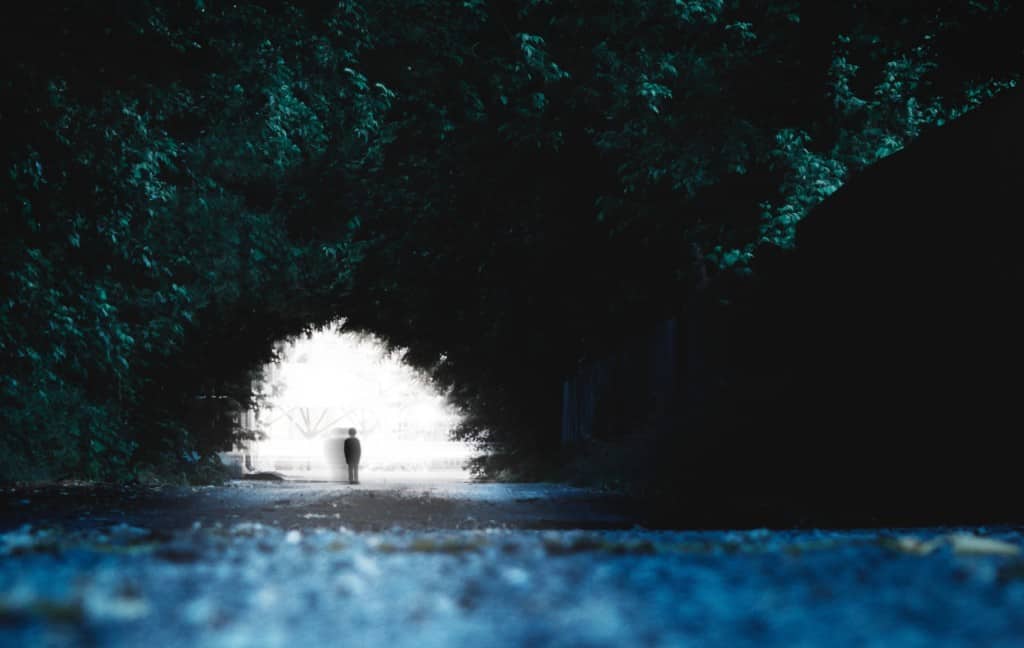Deconditioning & Human Design (Better, Calmer, Happier)

There can be a subtle way that the mind thinks, “If I am living according to my nature, truly being myself and as aware as I can be, then I will be happier, more capable, more equanimous, more tolerant, more loving,” or any other number of things we view (or have been conditioned to view) as desirable states. While this may be true, it may not look the way we expect.
One of the most relieving and liberating recognitions that can come through the knowledge of design is that certain aspects of ourselves are not wrong, bad, or in need of fixing. They may, in fact, be quite persistent and serve a particular purpose in the right context.
For example, if we consider the chart someone with the Channel of Abstraction 64-47, a “Design of Mental Activity Mixed with Clarity”. This is probably the busiest of minds, one that is always processing, always trying to make sense of what has happened in order to find clarity. It is a fixed, consistently pressured mind. While we may think that having a quiet mind is ideal, we can recognize that such a characteristic is a natural aspect of our being that can actually liberate us from experiencing it as a problem. We can simply let it be and witness it, rather than develop an inner resistance to it which can become a distraction.
– Adyashanti
Some spiritual teachers describe enlightenment as a process of removing obstacles, resistance, and conditioning rather than a process of improvement or adding anything to ourselves. In other words, being awake, aware, or enlightened is actually our natural state. Personal growth involves removing what obstructs that nature.
In Human Design, we refer to this deconstruction process as deconditioning which involves letting go of compulsive conditioned behaviors and beliefs that have interfered with our natural presence and flow of energy. One of the practical applications of Human Design is to follow the natural energetic response or awareness of the body as an alternative to habituated behavior determined by the mind. The knowledge holds that we go through seven-year cycles of this deconstruction.
In the first 7 years of deconditioning, we are often letting go of the historical build-up of reactivity to the ways we have been conditioned. These are often triggers, compulsive behaviors, and sensitivities that have become ingrained from chronic situations that compromised our strengths, natural abilities, and instincts. We may also have built-up resentments, self-judgments, or beliefs that distort our ability to see the present clearly. As we recognize what is true about our nature, we can let go of those structures that have obscured who we are and what is truly healthy for us.
The signature and not-self themes of type, for example, serve as signposts for what is natural and healthy for us or not. Yet, it does not mean that we are good or doing right by our design if we only experience the signature of our Type, as if that is a goal. Rather, these signposts provide experiential feedback about the correctness of our current situation.
We may think that as we become more aware or aligned with our nature, we will become happier or more calm, more peaceful, and less reactive. We may have some idea of what a more developed or enlightened version of ourselves looks like. In actuality, we may become more naturally reactive and responsive to what is happening at the moment. The not-self themes as they are described by Type, may in fact surface more immediately and serve as present-time signs of what is healthy and correct for us.
Alokanand Diaz, an Emotional Manifestor and Human Design teacher, describes it in his experience:
“Deconditioning was not to take my anger away. It was to make my anger fresh, from this day, not some childhood anger. Not an anger for nothing. It was very crisp, very clear and it was about this or that. And it was with this person. I was not angry with life. I was not angry with humanity. I wasn’t angry with myself. I was just angry because something was happening. So I realized that anger was never the problem. The lack of clarity in my anger, my own fear of embracing my anger, of saying, “Yes I am angry,” that was missing. So since that moment, I lost my fear of being angry anywhere, with anyone. And something new started in that I realized that anger is also something that defines me when it is clear. But anger is not bad. Anger is there to destroy falsities, to destroy what is not correct. The moment I started to embrace my anger, it was easy to get angry and then calm down.”
– Alokanand Diaz
Many of us would likely think that greater tolerance would be a feature of being more healthy or more aware. But more tolerant of what? I have found that acceptance of others as they are and acceptance of myself, as I am, has deepened significantly. You could say that I am more tolerant of others and of myself. Yet with that, my endurance for activities, certain social conventions, and interactions that interfere with what feels natural for me has diminished. The bitterness has become less entrenched with contempt and resentment and is more like an immediate bad taste in the mouth.
Chogyam Trungpa used the term ‘Spiritual Materialism’ to describe the act of using techniques and tools (often labeled ‘spiritual’) to reinforce a false sense of self. Buddhist traditions would call this false sense of self egoic. In Human Design terms, we call it the not-self. When the not-self takes hold of whatever tools or teachings we are employing, we may find that it actually drives us to use them to seek more control over our lives, our emotions, our reactions, our material gains, and our relationships. When we are not able to gain more of that control, we may reject the system as invalid.

There is a dance implied in the prospect of being awake or aware. If you have seen a plant for example, which needs sunlight to survive, you may have seen the way it adapts by growing in the direction of the light that is available. It does not decide to insist that it will become independent of sunlight or pridefully refuse to alter its direction to prove that it will not be controlled by the light that is available. It does not try to become a different kind of creature or move the sun. If no light is available and it can not survive, it does not assume that it is because it is unworthy of life or that it should have been able to make the sun move.
Perhaps our nature is the same. If we can recognize it, we can allow it to deal with the circumstances of life naturally. We can see, sense, or feel our way through our experience as it is. This is not an easy process in a world driven by collectively conditioned ideas and our own mental evaluation interfering with our perception and the intelligence of our bodies.
The temptation can be to use spiritual systems or awareness techniques to try to get what we think we want, avoid discomfort, gain status or accomplishment, or create a life we think makes sense to ourselves and/or others. Many of the things we think we want stem from an underlying belief that there is something wrong with the nature of ourselves as we are, and further with life as it is. Human Design, as a teaching, embraces the full polarity of every characteristic. To know fullness is also to know emptiness. For every emotional high, there is a low. Times of inspiration are interspersed with fallow periods of emptiness or silence. We may not always enjoy these polarities, but we can come to appreciate and accept them as well as recognize their value and their place in the right context.
I would guess that many of us know that we can’t always get what we want and that ups and downs are part of life. Growth mindset and grit are popular concepts these days. But as we experiment with different systems or teachings, is there still a part of us that holds onto the notion that we can “win the game”? Become enlightened enough, masterful enough, or aware enough to still get what we want after all, whether that’s in the realm of the material, emotional or relational?
Some of us are designed to work harder and make things better. Some of us are emotionally intense and generally nervous. Many of us are designed to wait much longer than we want to. Some of us are made to follow what makes us happy. Some of us will often feel like an outsider. Some of us are masters of material. Some of us are innately stubborn and can find great purpose in our tenacity. Often we have been conditioned to resist the truth of what we are before really getting to see what that truth can reveal. Sometimes we just don’t know until we know. Sometimes trying to change or improve ourselves too much, too fast is like refusing a gift that’s been covered in mud before we’ve really opened it to see what it inside.
– Chogyam Trungpa
Discovering our true nature is exactly that: a discovery process. Enlightenment may be as simple and as challenging as slowly developing our awareness and courage over time. It may be continuous rather than instantaneous. Trust in life itself, as it emerges, can develop if we can let go of the mind’s attempts to maintain what we think we should be. Human Design is a map that can point to this nature in each of us. But it is only describing and recognizing something that we are left to perceive and experience for ourselves. If it does not necessarily make us better, calmer, happier, what does it bring? Are we willing to find out?

